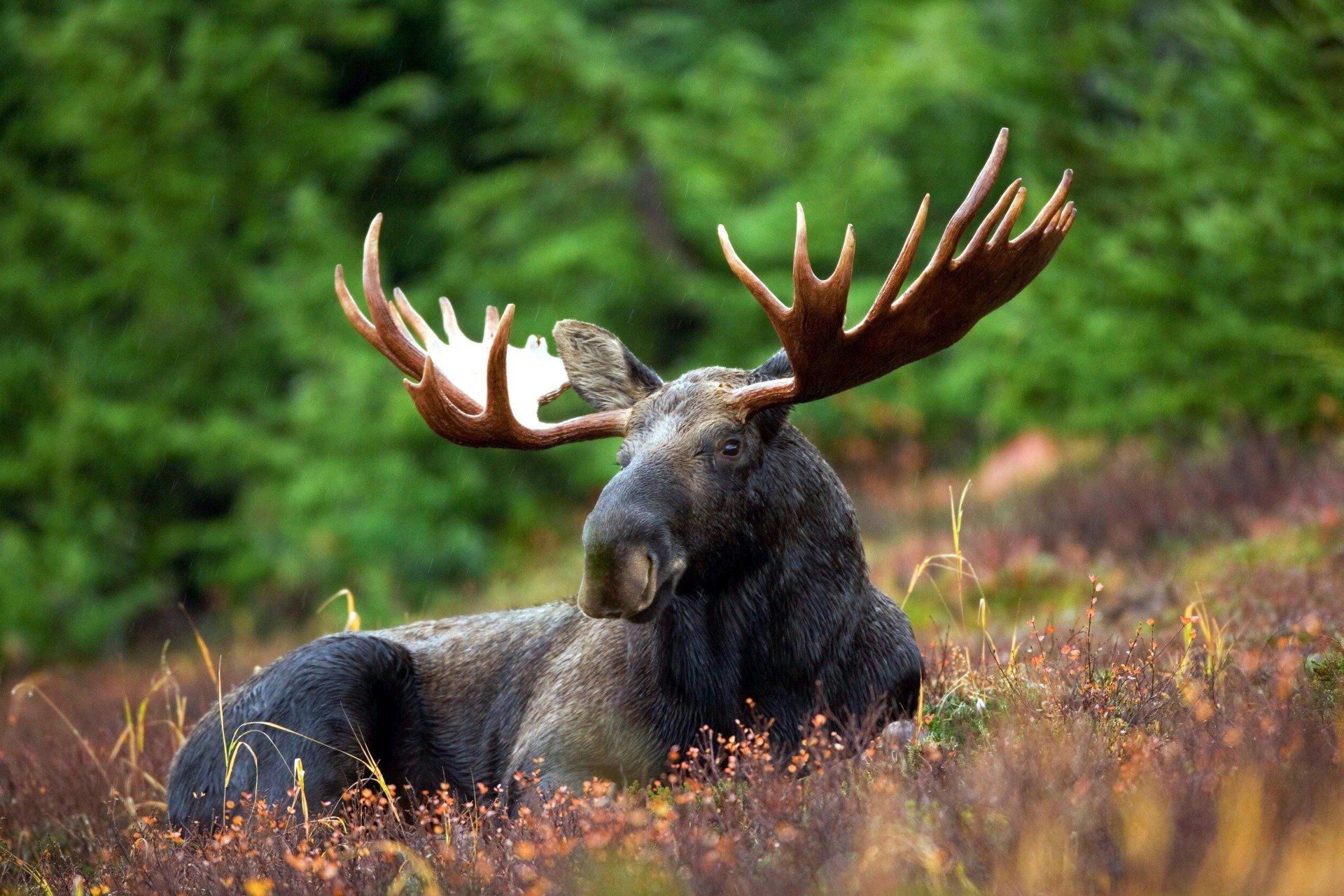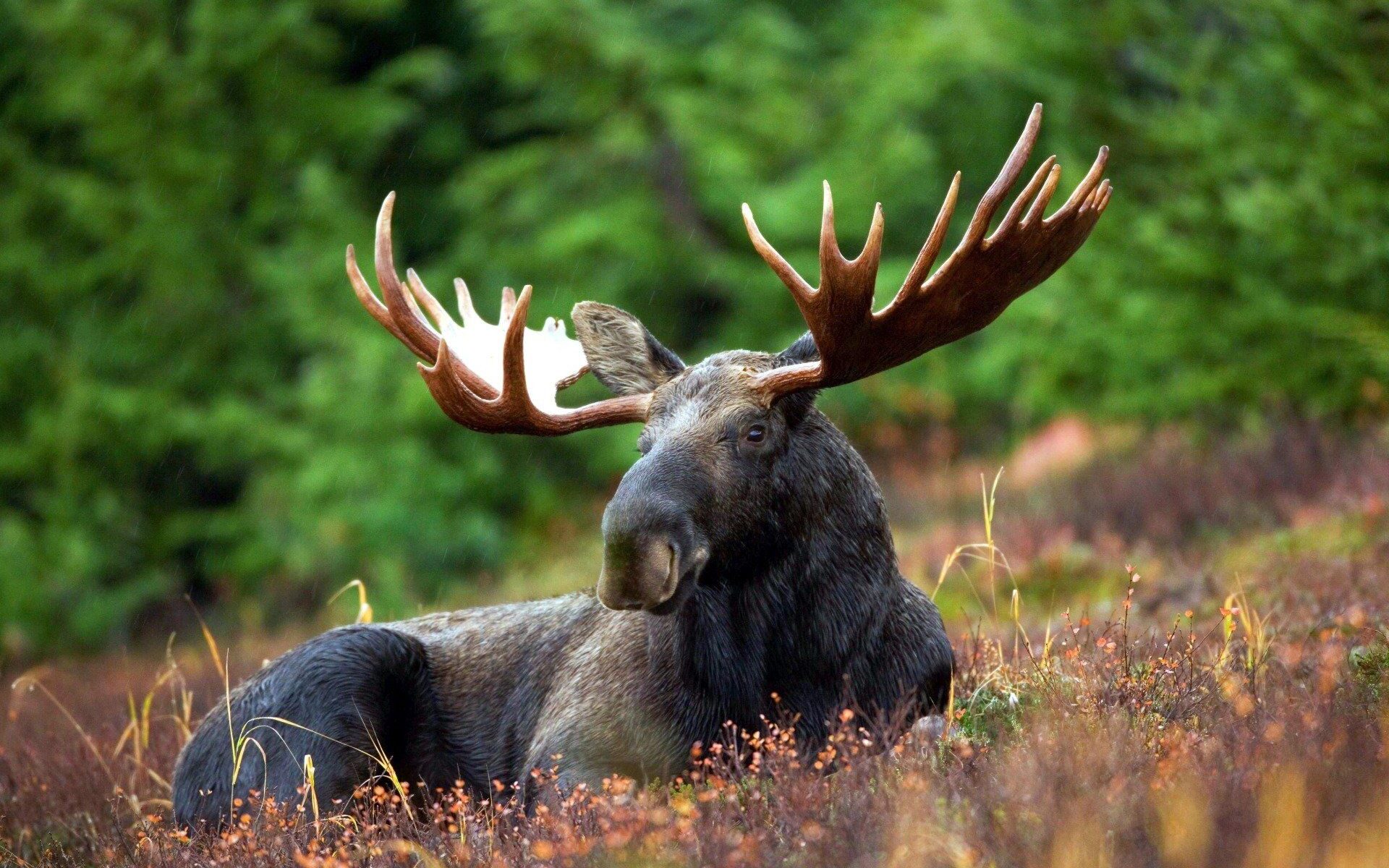EcoPerspectives Blog
Climate Change Threatens New England’s Moose Population: States Need to do More
By James Flynn, Staff Editor for the Vermont Journal of Environmental Law
March 22, 2022

Climate change is threatening northern New England’s moose population. Moose are the largest members of the deer family and are native to northern New England forests . Moose can stand up to six feet tall at the shoulder and weigh between 500 and 1,000 pounds . Because of their large size and strength, moose have very few natural predators . Despite this fact, the moose population has rapidly declined in the past fifteen years . Climate change is the culprit .
Climate change has led to warmer winters . Consequently, the winter tick population has rapidly increased . In the past, colder winters and snow cover lasting well into the spring kept the tick population in check . This is no longer the case. Unlike other types of ticks, winter ticks do not affect humans . But they are extremely dangerous to moose . Winter ticks are single-host ticks, meaning they remain on a single host throughout the winter season rather than dropping off after a single blood meal . This means a single moose often carries a substantial number of ticks. In fact, a study group found one moose calf to have over 90,000 ticks . Additionally, moose never evolved the grooming behavior found in deer and rabbits leaving them defenseless against tick infestations . The results have been tragic.
Winter tick infestations are extremely devastating to moose. Winter ticks feed on a moose’s blood severely weakening the animal in the process . Thus, moose become more susceptible to stressors such as other pests and habitat changes . Although adult moose infested with winter ticks are usually underweight and in general ill health, many survive the infestation . This is not the case for moose calves. Moose calves born in the spring often have a large number of ticks on their body by the time winter arrives . The ticks take so much blood that a calf may need to eat enough to replace their entire blood volume within weeks . If food is scarce, this becomes an impossible task and the calf dies . A three year study found that winter ticks were responsible for seventy-four percent of moose mortality in the studied group, including ninety-one percent of calves . In one recent winter, around sixty-three percent of moose calves in Vermont died, the highest figure on record . Winter ticks were responsible for most of those deaths .
State wildlife officials in northern New England are divided on how to solve the moose problem. Some states first responded to the crisis by reducing the number of moose hunting permits distributed each season . But some states are now moving toward a seemingly contradictory approach, allowing more moose hunting . The argument is that reducing the moose population will also reduce the winter tick population . The moose population will be smaller but also much healthier and more sustainable going forward . Another argument in favor of hunting is the fact that a certain number of moose will die from winter tick infestation each spring, regardless of the level of hunting . It is better to harvest these animals in the fall and utilize the meat rather than let them die a lingering death in the spring . This approach may help stabilize the moose population. But states could do much more.
Northern New England states should work collaboratively rather than individually in combatting the decline in the moose population. Currently, each state separately manages the moose population in their state despite winter ticks being a region-wide problem . A collaborative approach could include the following actions: an education campaign and new legislation. Together, these two actions could make a big difference in protecting moose from climate change’s impacts.
A collaborative education campaign would bring needed awareness to the moose population decline. The impact that climate change has on certain animal species, such as polar bears, is well documented and likely well known by the average individual . This is not the case with moose. New England states should launch a jointly run education campaign to inform the public about the impact’s climate change has on moose. A successful education campaign could also make the public more likely to donate or volunteer with wildlife preservation organizations and other NGO’s.
New legislation is needed to protect the moose population. Initial legislation could include funding for additional scientific studies on the impact winter ticks have on the moose population. States could use this data to create a regionwide plan. This plan could set goals for states to follow. Finally, the plan could include requirements that should the moose population drop below a set level, they would be declared an endangered species and given additional legal protections.
Together, a collaborative education campaign legislation could improve the lives of moose impacted by winter ticks and a changing climate.

